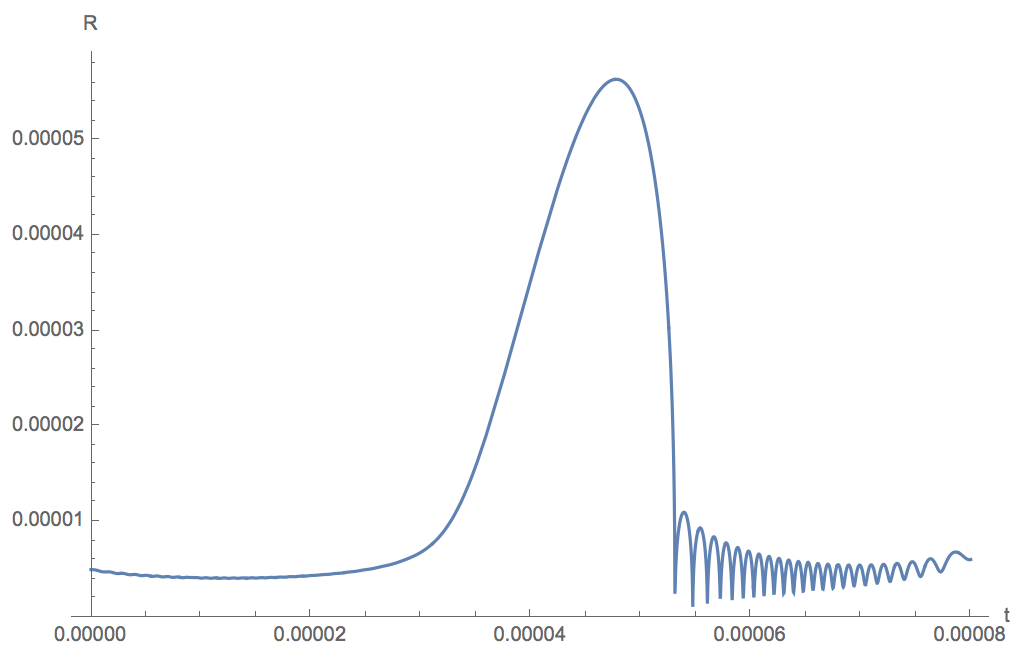I don't have your data so I created my own (similar characteristics):
ClearAll[R]
TMax2=0.00008;
3/2 D[R[t],t]^2+R[t] D[R[t],t,t]==1/\[Rho] ( p0 (R0/R[t])^(3 \[Gamma])-p0-pa Sin[\[Omega] t]+R[t]/cw D[ p0 (R0/R[t])^(3 \[Gamma]),t]) /. {cw->1490,\[Rho]->1000,\[Omega]-> 2 \[Pi] 20 10^3,R0-> 5 10^-6,\[Gamma]-> 7/5,p0-> 101325,pa->13/10 10^5}
sol2=R[t]/.NDSolve[{%,R[0]==5 10^-6,R'[0]==0},R[t],{t,0,TMax2},MaxSteps-> \[Infinity],PrecisionGoal->9,WorkingPrecision->13];
sol2=First[sol2];
Plot[Evaluate[sol2],{t,0,TMax2},PlotRange->{0,All},ImageSize->500,AxesLabel->{"t","R"}]

now we can discretize this data and add some noise, make a copy, and filter it.
data = Table[{t, Evaluate[sol2]}, {t, 0, TMax2, TMax2/10000}];
data[[All, 2]] += RandomReal[2 10^-6 {-1, 1}, Length[data[[All, 2]]]];
data2 = data;
data2 = {data2[[All, 1]], LowpassFilter[data2[[All, 2]], 0.2]}\[Transpose];
ListLinePlot[{data, data2}, AspectRatio -> 1/4, ImageSize -> 800]

I'm not sure why you want to use a Kalman filter precisely, I think your data is simply high-frequency noise that can be filtered out with a LowpassFilter... Kalman filter needs a theoretical 'model' behind the noise, which can be tough to justify...
Perhaps you can measure multiple periods of a collapsing/oscillating bubble and average it over many periods, that would be ideal. I believe these processes are quite stable over many periods.